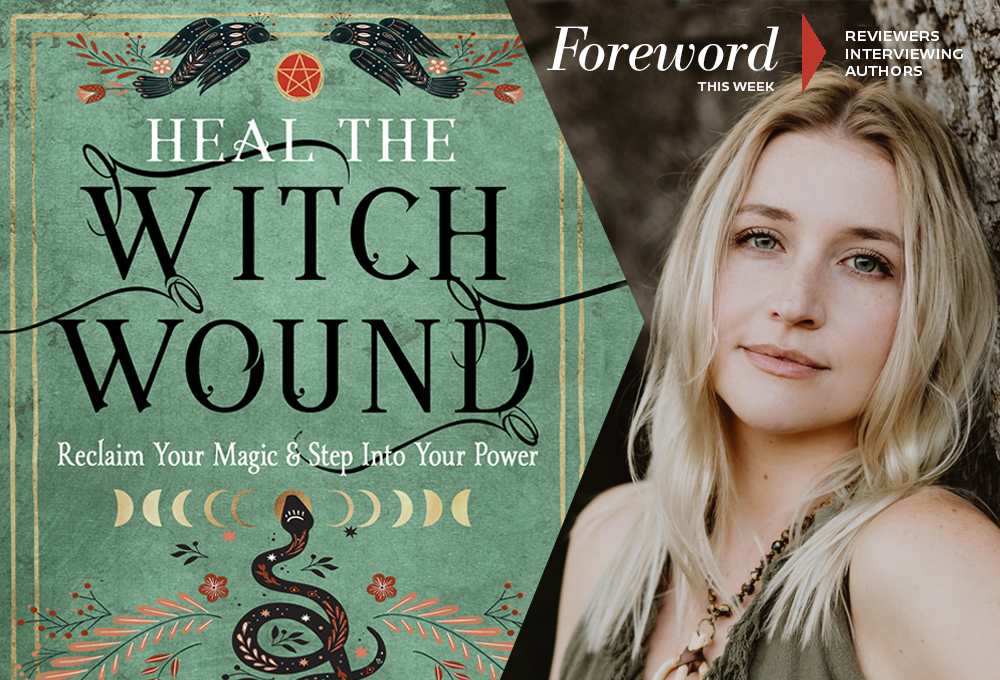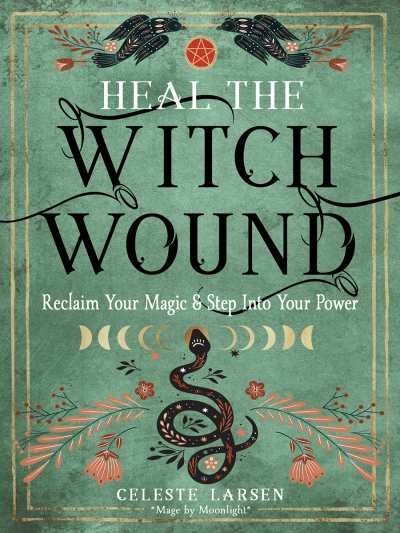Reviewer Catherine Reed-Thureson Interviews Celeste Larsen, Author of Heal the Witch Wound: Reclaim Your Magic and Step into Your Power

To grow is to discard old beliefs in favor of newer ones that fit better with our evolving sense of self. Everybody we meet, every walk in the woods we take, every book we read potentially leads to improvement.
As Abe Lincoln said, “I do not think much of a man who is not wiser today than he was yesterday,” so he was always open to hearing contrary opinions, questioning himself, changing his mind based on new information.

These thoughts come to mind as we realize how frequently of late we’ve been covering books about ancient earth knowledge: healing rituals, practices, and ideas that developed outside of modern society and formal religion—the stuff of earth mothers, druids, shaman, mystics, and yes, witches. Indeed, we’re especially fascinated by how witchcraft is filling a profound spiritual void in the lives of so many thoughtful women who opened their minds to new beliefs.
Catherine Reed-Thureson has been our go-to reviewer for these projects, including Celeste Larsen’s Heal the Witch Wound, which earned a sparkling review in the Body, Mind & Spirit feature in Foreword’s May/June issue.
Take a deep, openhearted breath and enjoy.
What inspired you to write Heal the Witch Wound?
Understanding and working through my own witch wound has been at the core of my personal healing journey. Even from a very young age, I remember feeling like I needed to obscure parts of my true nature in order to be accepted, hiding certain interests and forcing myself to fit into expected roles so I wouldn’t be rejected. Looking back, it’s crushing to realize that I was just a child when I began berating myself for “still” believing in magic.
The work of tending my witch wound has been healing for me on so many levels, but especially for that inner child who still lives within. My younger self would be absolutely in awe of the person I am today, and that inspires me to keep moving forward.
So in some ways, I wrote the book for all those past versions of myself. Heal the Witch Wound is the book I most needed when I was lost in that sea of shame, self-doubt, and fear. It wasn’t a resource I had access to back then, but now it can be a resource to all others who are working to heal their own witch wounds.
I wrote in Heal the Witch Wound that if my words touch even one soul, the book will have served its purpose. I stand behind this statement, because I know the ripple effect that healing the witch wound can have. When someone feels empowered to speak their truth, to be authentically seen, and to share their magic with the world, their actions can in turn inspire countless others.
The book provides a lot of historical detail about all that people endured in the past in the name of witchcraft. How can learning about the tragedies of the past help us understand the present?
Understanding the atrocities of the witch craze era can provide clarity about how and why the witch wound shows up in our own lives. Although we don’t know exactly how many people were killed during the witch hunts, a commonly accepted estimate is 50,000, with innumerable more imprisoned, tortured, and exiled from their communities.
Some of these people were indeed mages, cunning folks, herbalists, and healers. But many others were simply people who threatened those in power in some way: outspoken women, widows with land and wealth, Jews, pagans, people with disabilities. These were innocent people who were punished for being too “other.” With this history, is it any wonder that standing out as different can feel so threatening today?
Of course, we also cannot ignore that the same systems that allowed the witch hunts to occur (and, in fact, empowered them) are still in place today: patriarchy, capitalism, imperialism, ableism, white supremacy. By understanding how those in power used propaganda to incite hysteria and fear of “the other” during the witch hunts, we can recognize and remain vigilant about similar tactics used today.
The book discusses how the witch wound affects people today. Can you explain why it is so important to address and heal this wound?
The short answer? Because this is your life, and you deserve to live it as your truest self, doing and experiencing all the things that make you happy without fear or shame. Period.
The longer answer is that the witch wound is insidious, and can affect us in all kinds of seemingly unrelated ways. Deeply rooted limited beliefs (such as the idea that your intuition cannot be trusted, that your emotions are “too much,” or that you are not creative enough) can cause you to delay your dreams and limit your own potential in order to meet societal expectations. Fear of rejection can lead to stifling your self-expression, dimming your own light, people-pleasing, and allowing personal boundary violations. The witch wound can also show up as feelings of shame related to sexuality and the physical body, especially for women.
In my own life, the journey of healing my witch wound has opened so many doors—many of which I never even realized were locked.
What are your favorite rituals or practices for healing the witch wound?
My favorite practices are the ones that get you out of your thoughts and into your body, bringing you back to your immediate reality. This includes mindfulness meditation, dance, stretching, deep breathing, body scans, and spending time in nature—all things that help to slow down racing thoughts and soothe nervous system activation.
Learning to regulate my nervous system has been one of the most important aspects of my own healing journey. This is because a regulated nervous system has a higher capacity to tolerate uncomfortable emotions and sensations. In other words, soothing your body can create more energetic space, making it feel safer to speak your truth, be authentically seen, set firm boundaries, express yourself freely, take risks, and work through fears and blocks.
In terms of magical practices, I love calling upon my well and wise ancestors in ritual. I work with them through trance, deep meditation, and divination to understand our ancestral witch wounds, and ask them for guidance and support in my healing journey.
As a simple yet effective daily practice, I often speak positive affirmations such as “it is safe to be myself” in front of the mirror first thing in the morning. Bonus points for chanting or singing an affirmation, which can be so healing for the throat energy center.
How do you see the conversation around witchcraft and the witch wound evolving in the future?
My prediction is that witchcraft and earth-based spirituality will continue to grow exponentially, attracting more practitioners every year. Many people find these paths after realizing that their previous religious views or affiliations were not offering the level of fulfilment, connection, meaning, or empowerment they needed or desired. These qualities are at the very heart of witchcraft.
This will make the conversation around the witch wound become increasingly relevant and important for many people as they work through limiting beliefs and internalized stigma about what it means to be a witch.
As I’ve already mentioned, when one person begins to heal the witch wound within themselves, it creates a ripple effect that can inspire, empower, and heal the people around them. So in this way, I believe it’s possible to heal the witch wound within the collective unconscious, where the effects of that healing can be incredibly far-reaching through time and space.
Perhaps there is even a future beyond the shadowy reach of the witch wound, where every soul feels safe to shine.
Catherine Reed Thureson
